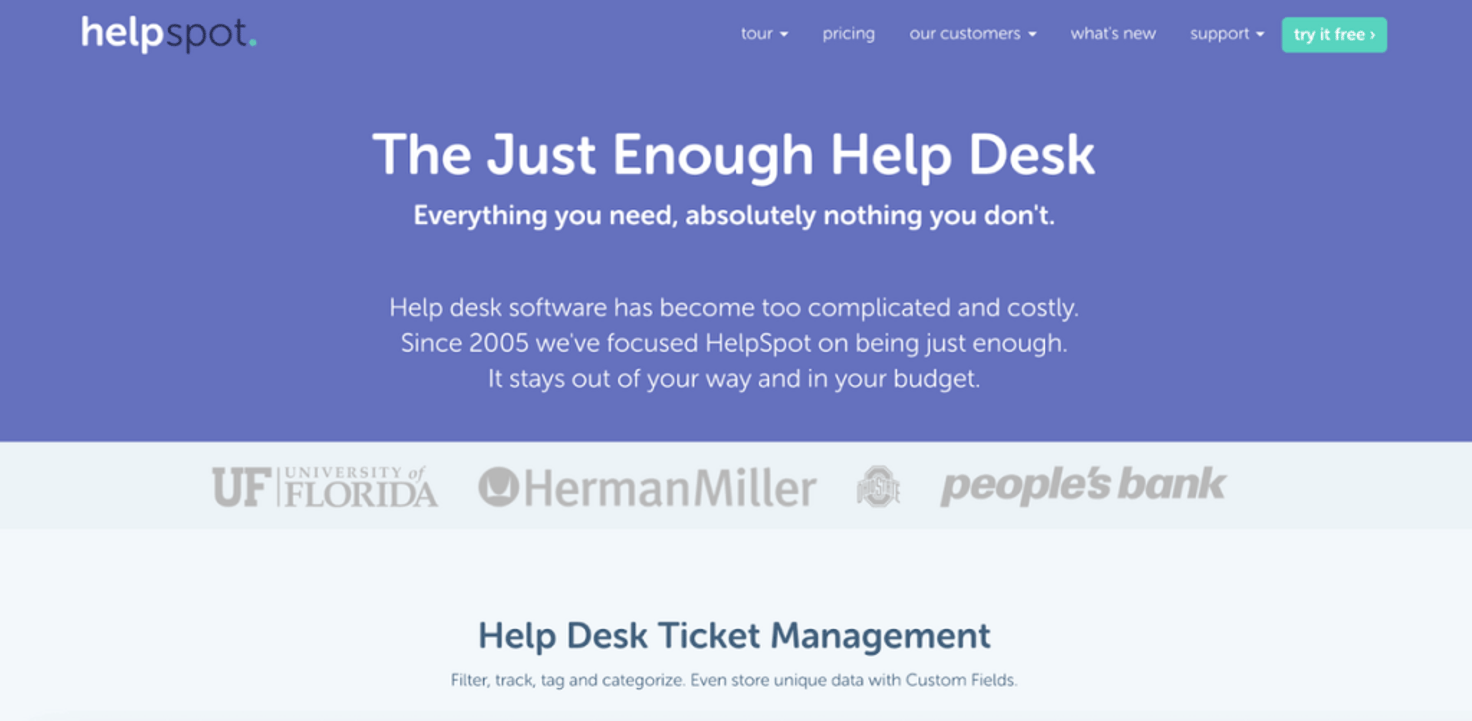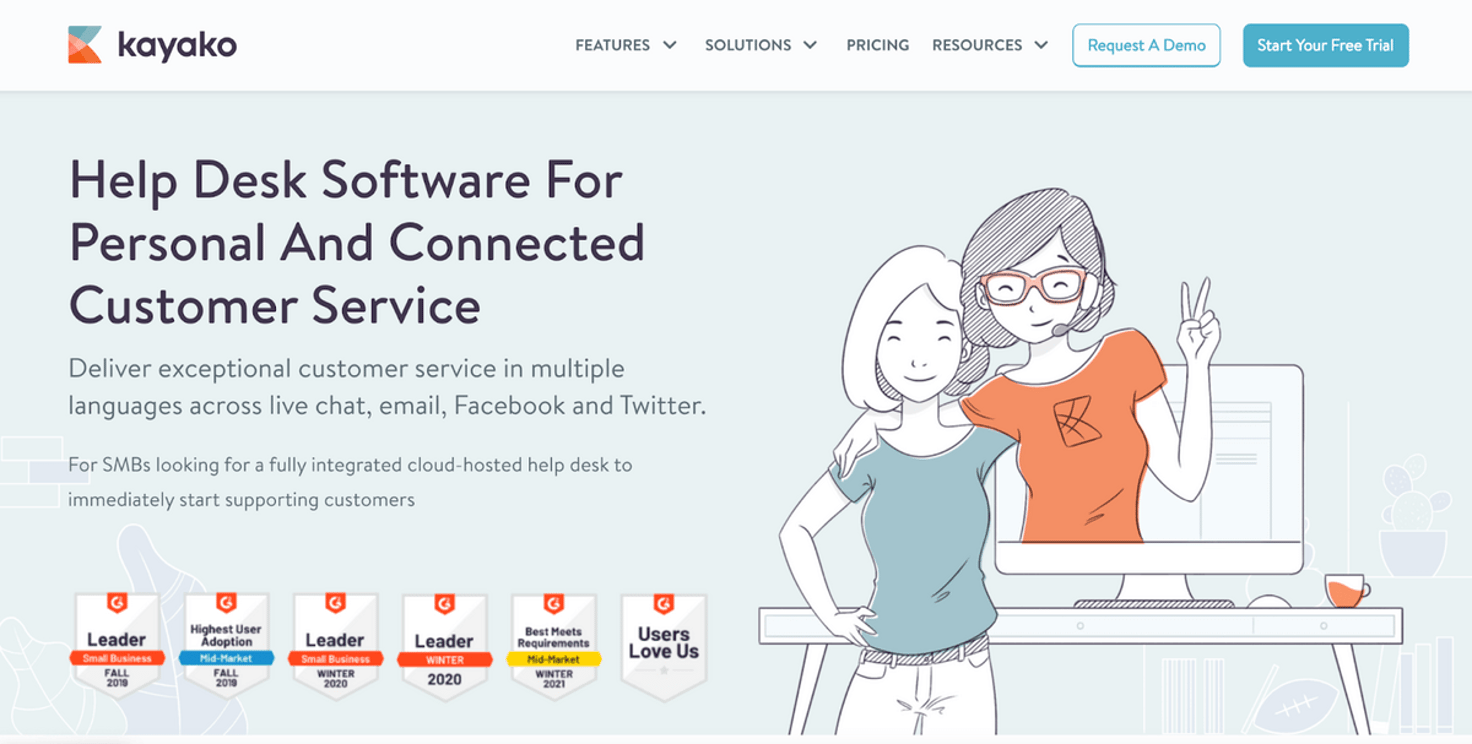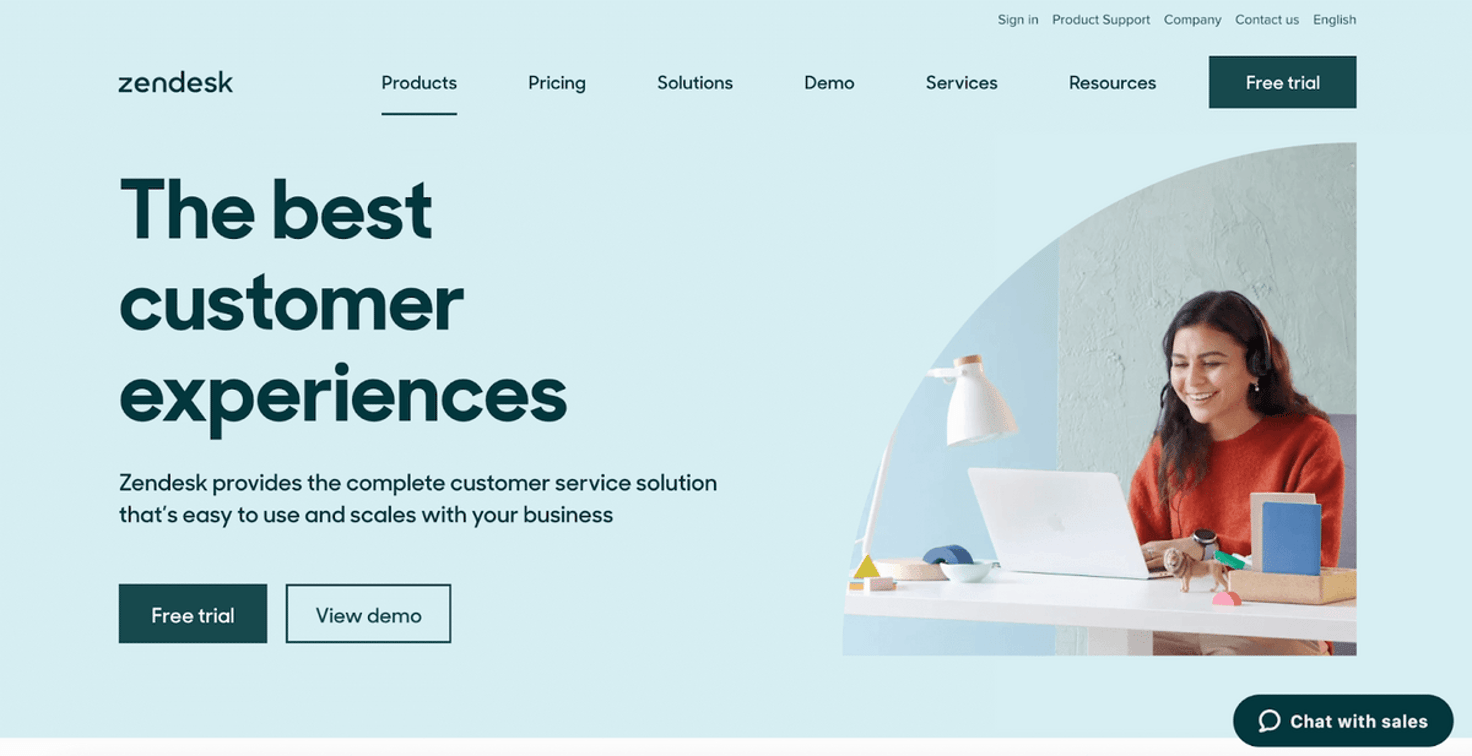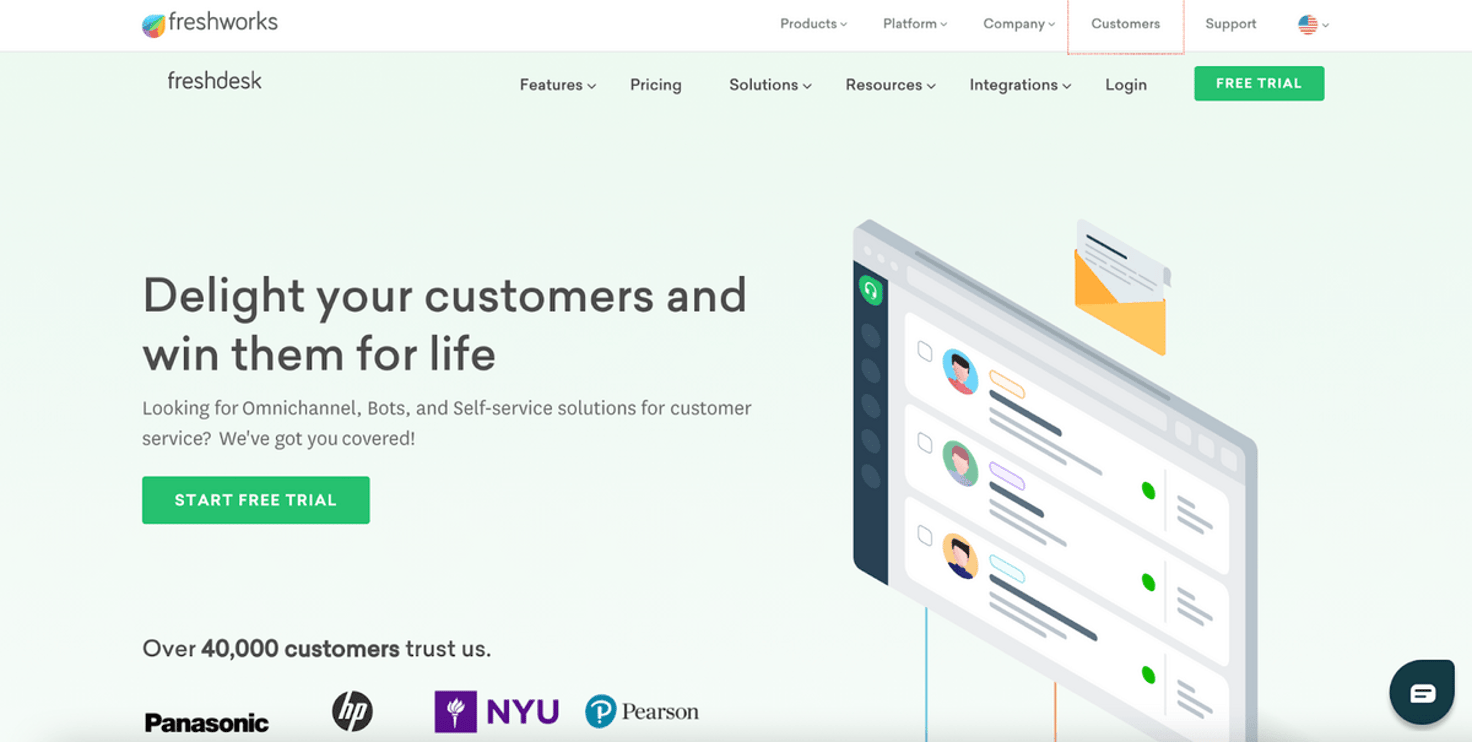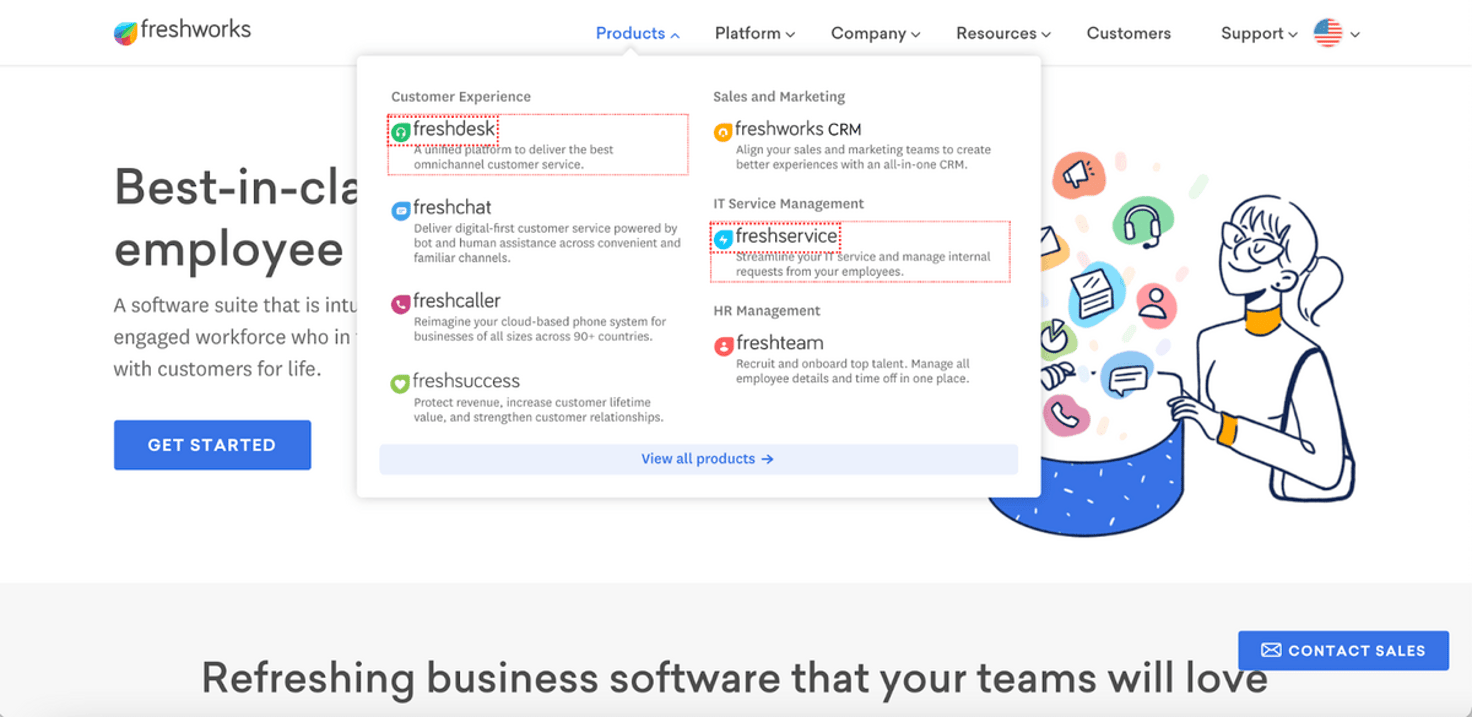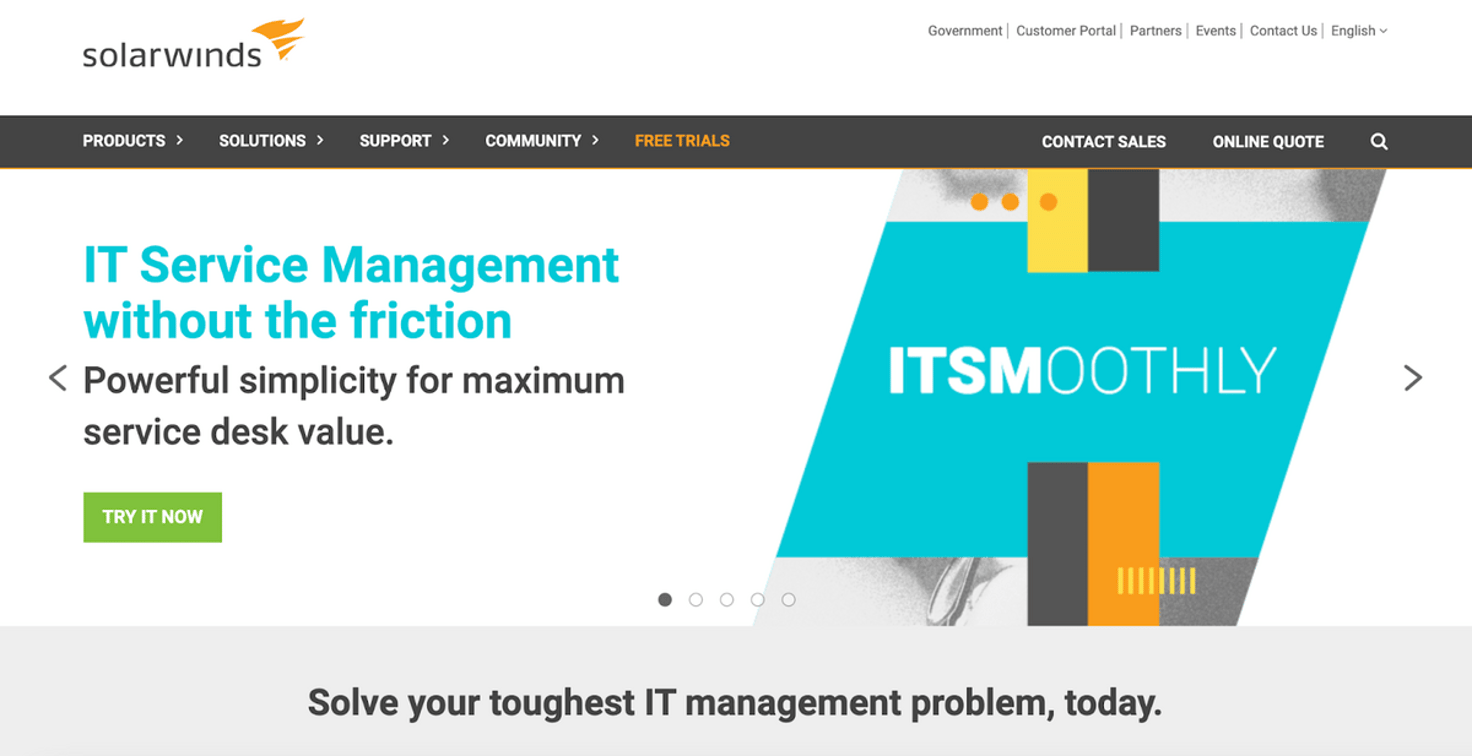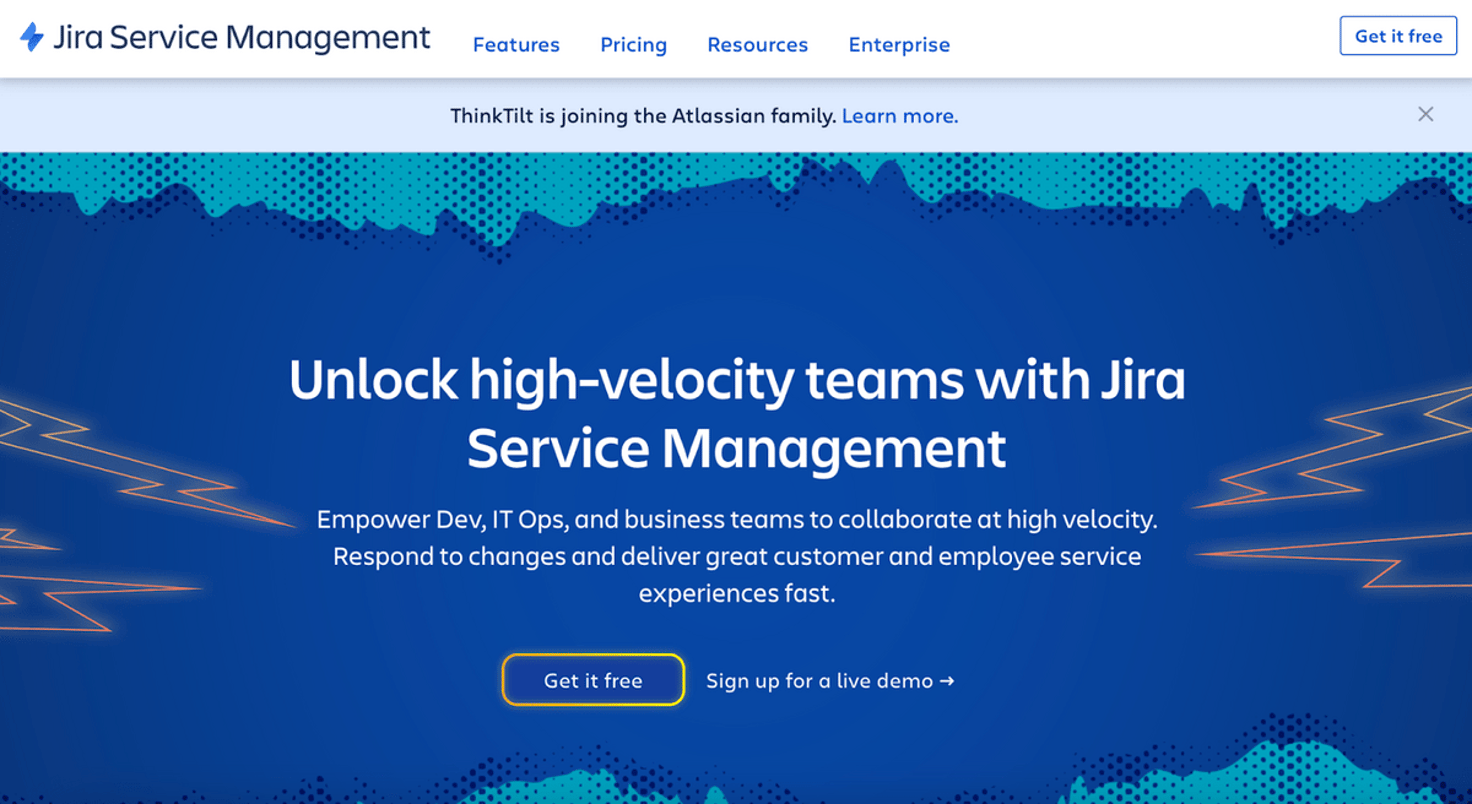7 Best ManageEngine ServiceDesk Plus Alternatives & Competitors

ManageEngine’s ServiceDesk Plus is a great help desk solution for IT teams in small to midsize businesses who have adopted the ITIL-philosophy and need advanced ITSM software to manage their entire IT infrastructure.
But ManageEngine isn’t perfect: IT teams who adopt ManageEngine’s help desk for better ticket management find the software to be far too robust, and teams who do need the full-scale solution switch from ManageEngine for a variety of reasons, from dissatisfaction with features to lack of budget.
Some ManageEngine reviewers say that ManageEngine’s IT service desk:
- Provides too many advanced features that aren’t needed or used.
- Has an outdated interface.
- Is time-consuming and challenging to adopt because it is so robust and complex.
- Can be glitchy.
- Is pretty expensive and customer support occasionally requires you to upgrade your package (and spend even more).
So in this article, we’ll review popular ManageEngine ServiceDesk plus alternatives, starting with HelpSpot — our straightforward approach to managing IT requests and improving the support process.
We’ll also talk about 3 other customizable help desk systems and 3 IT help desk alternatives so you can weigh the pros and cons of all of the top alternatives.
7 Best ManageEngine ServiceDesk Plus Alternatives
HelpSpot is a customizable help desk with all of the core features your IT team needs to manage IT requests (and none of the confusing extras). To explore our help desk software and learn more about our ticket management features, start a free 21-day trial.
HelpSpot’s Help Desk Features for IT Teams
We launched HelpSpot over a decade ago with the goal of creating an uncomplicated help desk system. Our focus is on email and request management, and since we debuted, we’ve worked with thousands of IT teams to:
- Improve ticket organization.
- Facilitate easy collaboration on support requests.
- Quickly pinpoint and resolve IT issues.
- Track specific details about IT requests and monitor how they’re resolved.
But full disclosure: We’re largely different from ManageEngine’s uber-robust service desk. ManageEngine’s IT service desk is designed to do it all, from request management and incident management to asset management and project management.
So if you need all of that extra functionality in addition to request management, then we’re probably not the best solution for you (although you can customize our software to be as complex as you need through integrations and our open source API).
But if you need a help desk for email and request management, then we’re right up your alley. Many teams who’ve switched to us from ManageEngine have said our software is much easier to learn and far more budget-friendly.
Let’s talk more about how HelpSpot appeals to IT professionals.
Clean User Interface
Our focused approach to request management is most apparent in our clean interface.
When you open HelpSpot, you’re brought straight to your central inbox so you can instantly view your team’s support requests.
We include the basic information about each ticket in the overview, but don’t overwhelm you with a ton of data, as opposed to many support desk tools that jam pack a ton of info in every ticket view.
The menu and sidebar are straightforward, too, so you aren’t stuck clicking around a thousand menu options and guessing about which tab takes you where.
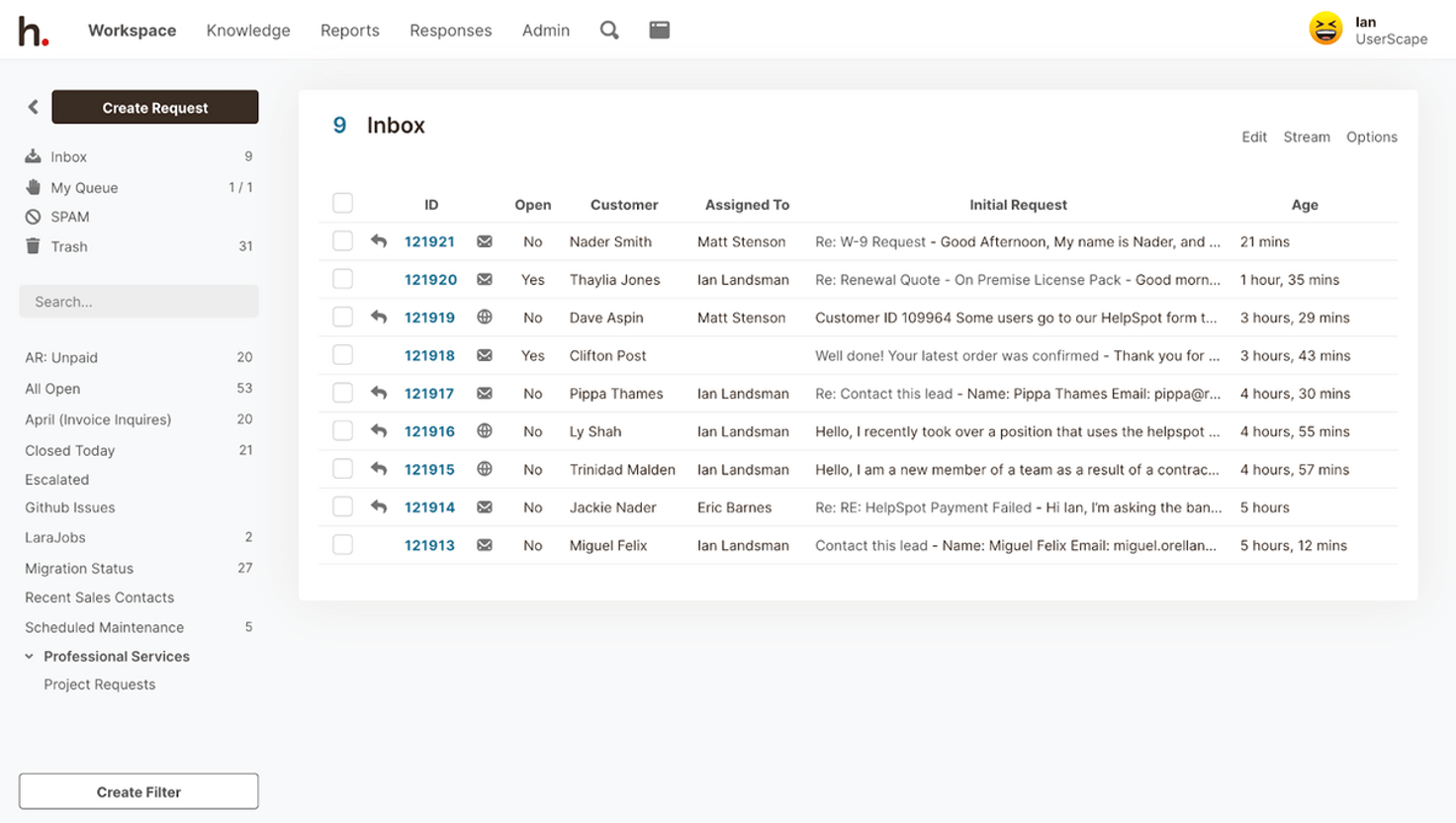
Within the support tickets, agents can view the conversation history, how the ticket was categorized, the agent the ticket is assigned to, and any custom fields they’ve set to generate with the ticket.
Instead of cluttering each ticket with hundreds of data fields, users have total control over the data they track and display (more on that below).
This clean interface makes our software easy to navigate: You can clearly see your new tickets, find your queue, and collaborate with other agents within each ticket.
Simple & Clear Ticket Organization
Your central inbox in HelpSpot displays all new support requests. You can link as many email addresses as you like — say, for example, you have dedicated email addresses for different request types or end users — and you can even take advantage of integrations to organize support requests from other channels within your HelpSpot dashboard.
From the central inbox, your agents can scan through the incoming tickets and assign the requests they feel confident handling to themselves. As tickets are assigned, they disappear from the central inbox and repopulate in your agents’ queues; this keeps your central inbox clean, provides clarity for who’s working on what, and prevents tickets from accidentally being reassigned.
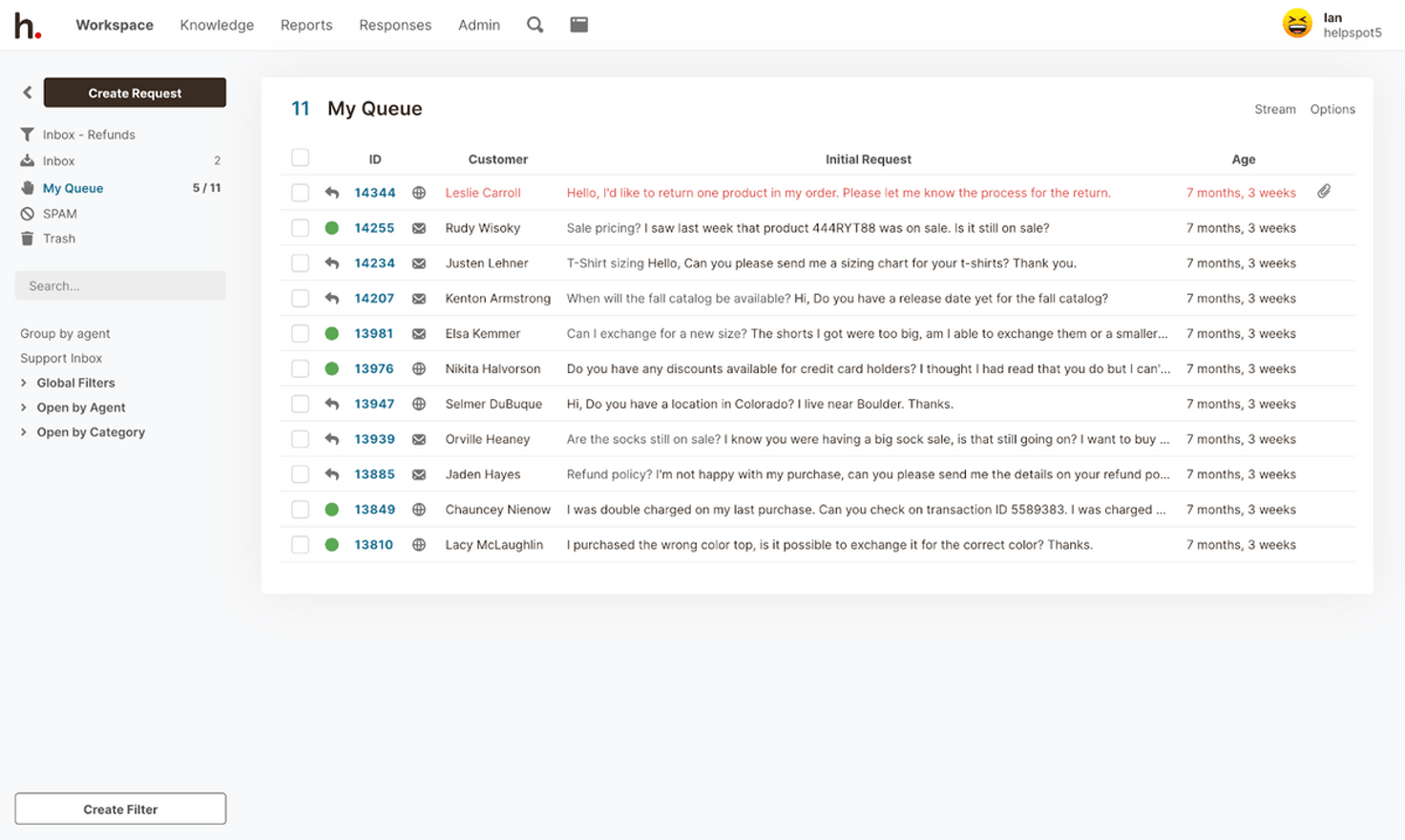
Smoother, Faster Team Collaboration & Ticket Resolution
HelpSpot is built with a variety of features to improve team collaboration and speed up ticket resolution times. Teams can also use our automated workflow rules to prompt HelpSpot to complete certain tasks for them.
For example:
- Self-Service Portals: Create self-service portals so users can submit support tickets, with all of the specific information about their request, right from your website.
- Self-ServiceKnowledge Base: Publish all of your troubleshooting and FAQ documentation on your website so users can resolve their IT issues without having to contact your team.
- Templated Replies: Set up a library of templated replies to save your agents time and energy typing out responses to support tickets.
- Internal Notes: Message with other agents within each support ticket. All of the comments are saved for other team members so your agents don’t have to jump around to messenger apps and ask others for status updates. Agents can also re-assign tickets when looping other agents in the comments; that way, everybody is always clear about the tasks they need to tackle.
- Conflict Detection: See when another agent is viewing or responding to the ticket you have open. Comment back and forth in real-time and avoid stepping on each other’s toes.
HelpSpot’s most time-saving functionality is our automation rules and triggers.
You can create automation rules for a variety of different things:
- Set reminders for service level agreements (SLAs).
- Create escalation triggers to prioritize tickets if they contain certain words or phrases.
- Automatically route tickets to specific agents based on the request type.
Every team uses these automation rules differently, and there’s really no limit on how you can configure HelpSpot’s automation rules to streamline your support process.
Powerful Data Tracking
“Managing” support requests involves more than just assigning and responding to tickets, though. Many teams, especially IT teams, want to track their IT requests and their specifics to better understand the types of technical issues their users are experiencing.
And while we’re not a full problem management software, teams can use HelpSpot to track important details about their support requests and use that information to prevent future problems.
In HelpSpot, you can set up unique custom fields for all of your request categories to track specific details about each support request your team fields.
For example, if you want to track specifics around all of the tickets you receive for “network issues” you can create fields to track affected devices, the network the devices were connected to, the devices IP address, and more.
Then, you can filter requests by category and custom fields to hone in on similar request types, and use HelpSpot’s built-in reporting features to monitor tickets over different time periods.
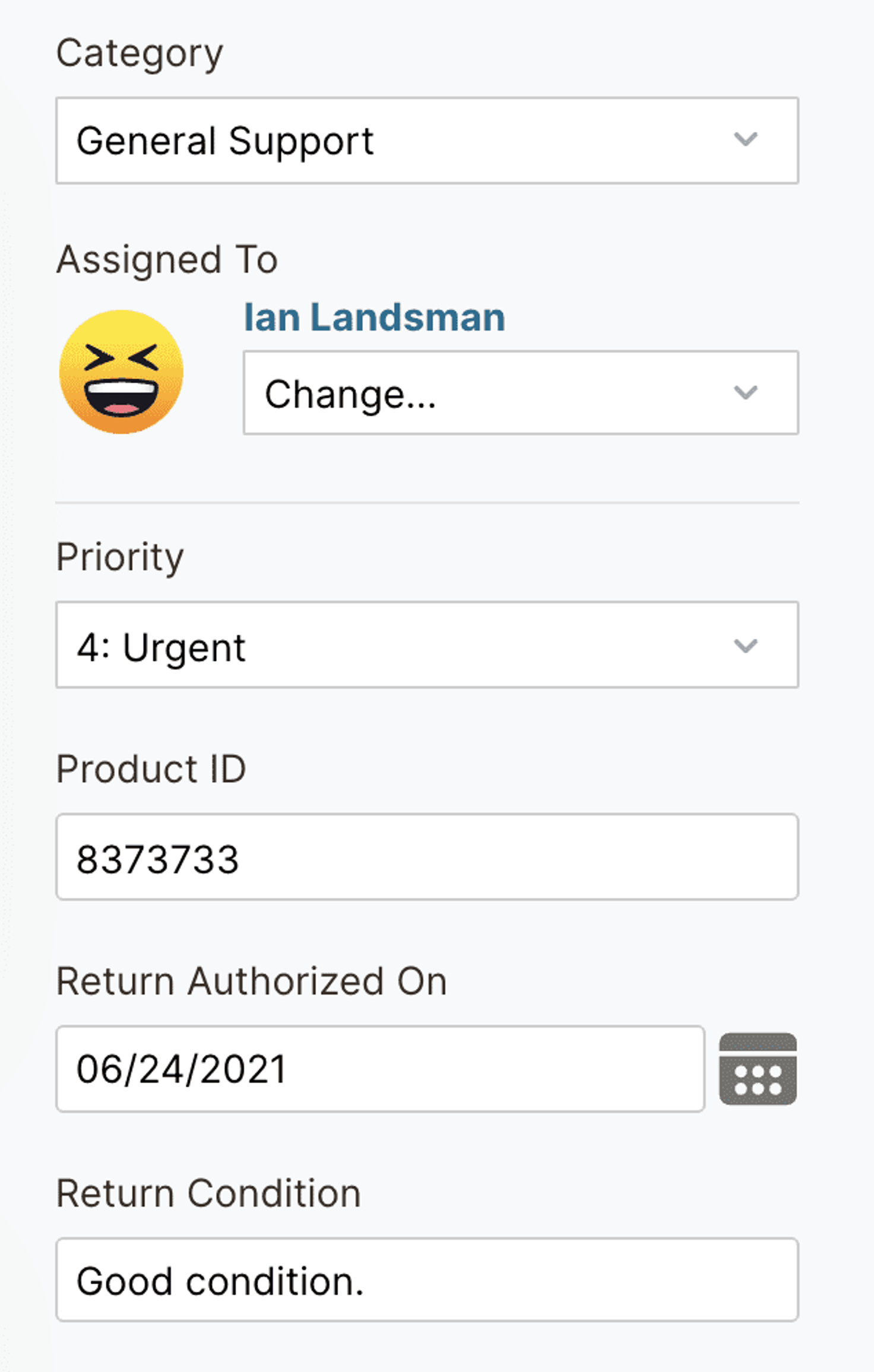
Our reporting tools let management track a variety of metrics to keep an eye on how their agents are performing and gauge when it’s time to make new hires.
You can track things like:
- How many requests your team receives.
- How many responses are sent.
- How many replies individual agents send.
- Average response times.
- Average resolution times.
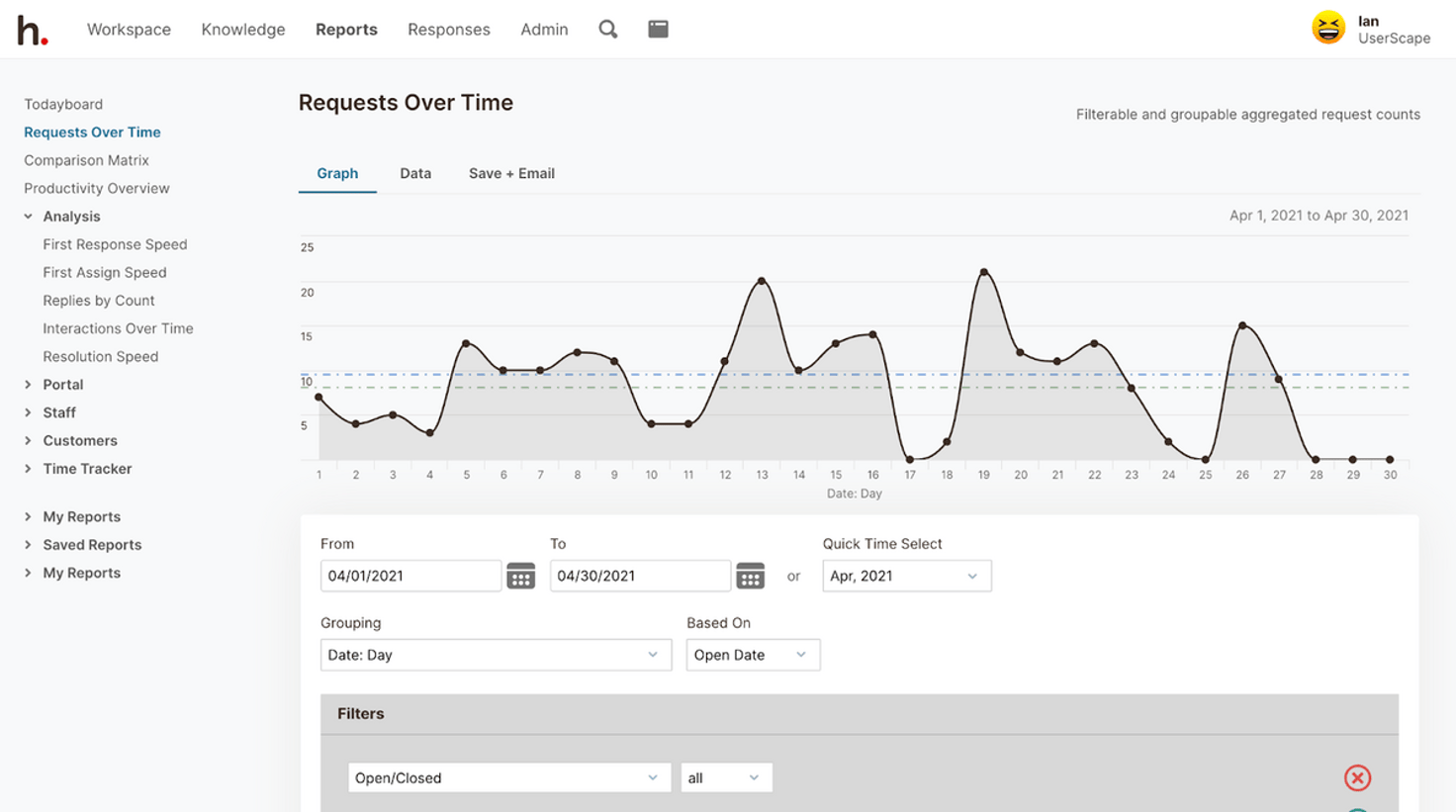
It’s important to note: The custom fields and reporting features are completely customizable. You can leverage these tools to track the information and metrics that are most important to your team’s operations.
On-Premise & Cloud-Based Options, Plus Mobile Apps
Most help desk software brands are transitioning to cloud-based solutions. And although cloud-based software is beneficial for numerous reasons, there are still certain cases where teams need to work on a self-hosted system (i.e., you want better control over data storage, you need to operate on a specific server).
We offer both on-premise and hosted versions of HelpSpot so you can choose what suits you best. We aren’t discontinuing our on-premise help desk anytime soon, and both versions of HelpSpot are built with the same set of features to improve ticket management and team collaboration.
We also offer a HelpSpot mobile app that is compatible with both versions of our software (self-hosted and web-hosted).
Limitless Customizations
While HelpSpot is designed with simplicity in mind, we understand that some IT teams need a more robust solution to support their daily operations, so we built HelpSpot with an open source API so teams can customize our software any way they want.
HelpSpot also integrates with a variety of other software types through a Zapier connection, so you can sync it with CRMs, phone systems, and chat bots, as well as other IT management tools like bug and asset trackers, to function as an all-in-one solution.
Transparent Pricing
Another way simplicity pays off? Better pricing.
We’re able to offer the most affordable help desk available because we don’t jam pack our software with a billion and one complex features, and we don’t limit our users or force upgrades by breaking up HelpSpot’s features into tiered packages.
Every user has access to all of HelpSpot’s features and pricing is completely transparent — we base our quotes only on the number of seats you want.
We don’t charge extra to take advantage of integrations and we don’t tack on fees if you need help from our support team.
Want to learn more about HelpSpot’s request management features and see how you can customize our software to support your IT team? Get in touch with our team to talk more about what you need in a help desk and sign up for a risk-free 21-day trial of HelpSpot.
Other Top-Rated Help Desk Ticketing Systems
HelpSpot is a top choice when looking for help desk software to improve ticket and request management. But there are a variety of other customizable help desk and ticketing systems teams also consider when transitioning away from ManageEngine’s IT service management solution.
Below, we talk about some of the other options we’ve heard clients mention as they explore alternative help desk software.
Kayako
Kayako is a customer service help desk software built to help teams manage customer requests across a variety of channels.
It’s a great choice for IT teams who manage support requests from social media because it comes with out-of-the-box Facebook and Twitter integrations.
Since it has a built-in chat bot integration, as well, it’s also a good fit for teams who do a lot of communicating with customers via chat.
- Pros: Responsive customer support team, frequent software updates, intuitive features and good user experience.
- Cons: Price fluctuates a bit and the cost of using Kayako is now somewhat expensive, Kayako no longer offers an on-premise version of their software.
- Recommended for: IT teams who interface mostly with customers and need to field requests across many channels, specifically social media.
Zendesk
Zendesk is one of the most robust help desk software solutions available for teams who need a variety of tools to manage and improve their customer support.
(If you just field IT requests from within your organization, you probably don’t need Zendesk.)
Zendesk is designed for mid-size to large teams. Their software is designed to scale with you as you grow, which is why it’s a popular choice among multinational and enterprise organizations.
- Pros: Out-of-the-box omni channel routing, built-in chat bots, and social media widgets.
- Cons: Very challenging to learn and adopt, reviewers say that Zendesk offers poor customer service.
- Recommended for: IT teams who want all of the bells and whistles to hone in on — and improve — their customer service and support processes.
Freshdesk
Freshdesk, powered by Freshworks, is another robust help desk option built to accommodate small and large teams across all verticals.
It’s available in tiered packages, offering a catalog of add-ons so teams can customize their software with the extras they want.
Freshdesk’s most basic package comes with a variety of features to improve request management and enable teams to create self-service solutions for their customers.
- Pros: Tiered packages make Freshdesk more accessible; teams can customize Freshworks via add-ons and integrations.
- Cons: Reviewers report a variety of different glitches and usability issues and say that Freshdesk’s customer service team can take a while to address those issues.
- Recommended for: IT teams who need a help desk with additional features to improve field service management.
ITSM Help Desk ManageEngine Alternatives
If you need more than request management and tools to improve the customer support process, then a customizable help desk may not cut it. Teams who need a true ITSM alternative to ManageEngine’s ServiceDesk Plus should consider some of the options below.
Freshservice
Freshservice is an ITSM help desk by Freshworks. It has more features for IT teams than their general Freshdesk help desk — including IT asset management and project management features, as well as built-in reporting tools.
The Freshworks ITSM help desk is entirely cloud-based and is designed mostly for enterprise IT teams who juggle both internal (co-worker) and external (customer) support requests.
- Pros: Offers a variety of different add-ons to further customize the software, such as extras to enable SaaS management and more comprehensive asset and project management packages.
- Cons: The mobile app is a little glitchy and Freshservice borders on “pricey”.
- Recommended for: Enterprise IT teams who want a customizable software to improve IT operations.
SolarWinds Service Desk
SolarWinds is a bit like ManageEngine in the fact that they offer a variety of different ITSM software solutions, including an IT service desk.
Their service desk includes built-in asset tracking and network monitoring features, but if you need things like database management or application management, you can buy those tools from the SolarWinds site and sync them with your service desk.
SolarWinds also recently updated their service desk with features to facilitate change management.
- Pros: SolarWinds can work as a full-scale ManageEngine alternative because they offer a variety of ITSM software that all sync with their service desk.
- Cons: SolarWinds newer features could use some tweaks to improve their usability, the platform is constantly updating but not every update is perfect.
- Recommended for: IT teams who need a variety of ITSM software, beyond just a service desk, to manage all of their tasks and IT processes.
Jira Service Management
Jira is another full-scale ITSM solution, so like SolarWinds, it’s great for teams who need more than just an IT service desk.
Jira is a well-known IT software brand that debuted a couple of decades ago as a bug and issue tracker. Since their inception, they’ve expanded their offerings to provide IT users with everything they need to work efficiently.
At the end of 2020, Jira redesigned and relaunched their help desk software, so it’s now entirely cloud based and is more “IT operations management” than just “IT request management” software, so it has a lot of features not all IT teams need.
- Pros: Jira has been around since 2002 and is well-known and trusted amongst the IT community, their software has a very modern feel and is generally easy to use.
- Cons: Jira discontinued their on-premise IT software and have since raised the price of their cloud-based offerings; Jira appeals mostly to large or enterprise businesses.
- Recommended for: IT teams who need a very robust IT service desk and want to sync with project and issue tracking software.
Test HelpSpot’s Email & Request Management Solution for Free
IT teams don’t need to dish out a ton of money on expensive ITSM software if they just need a help desk to aid request management.
Choosing a help desk software comes down to considering (1) why your team needs a help desk system and the troubles you’ve been having, (2) the features and tools your team needs to accomplish your day-to-day tasks and run more efficiently, and (3) the complexity of the help desk platform and your resources to get your teams up to speed.
Most teams have a much smoother transition by choosing a software that has just the features they need, without a ton of extras to work around, and something that isn’t super difficult to learn and adopt.
To learn more about HelpSpot’s features and see how you can tailor our help desk software to support your IT processes, get in touch with our team and start a free 21-day trial.

